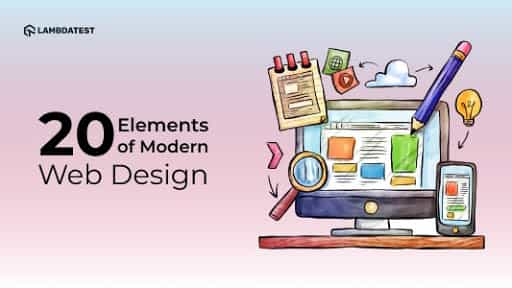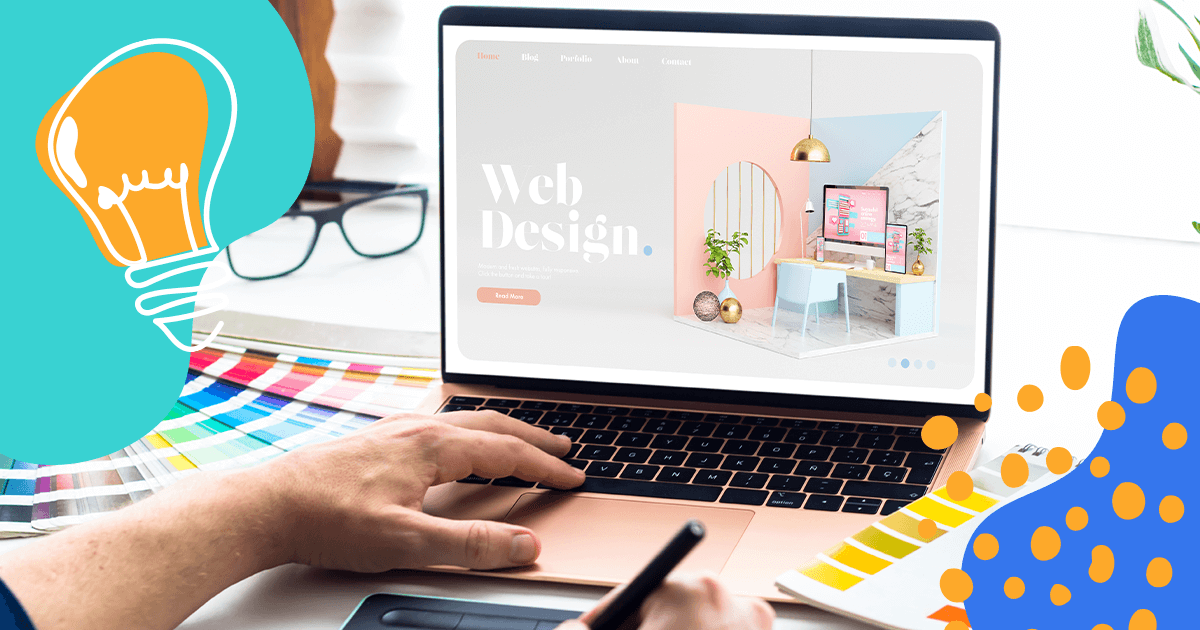All Categories
Featured
Table of Contents
- – Web Design - Linkedin Learning, Formerly Lynda...
- – Web Design Ledger: Homepage Tips and Tricks:
- – Sustainable Web Design: Home Tips and Tricks:
- – Learning Web Design: A Beginner's Guide To Ht...
- – Why Is Web Design Important? - 6 Reasons To I...
- – What Can I Do With A Web Design And Developme...
- – Collaborate & Create Amazing Graphic Design ...
- – Web Design Software By Xara Tips and Tricks:
- – Otc Web Design Girdwood, Alaska - Web Design...
- – Web Design Services - Verizon Small Business...
- – $899 - Custom Mobile Friendly Website Design...
Web Design - Linkedin Learning, Formerly Lynda.com Tips and Tricks:
Quick summary Use and the energy, not the visual style, identify the success or failure of a site. Considering that the visitor of the page is the only individual who clicks the mouse and therefore chooses everything, user-centric style has actually developed as a basic technique for effective and profit-oriented website design - web design frederick md.
and the utility, not the visual style, determine the success or failure of a website. Because the visitor of the page is the only person who clicks the mouse and therefore decides everything, user-centric style has actually ended up being a standard approach for successful and profit-oriented web design. If users can't utilize a function, it might as well not exist.
g. where the search box should be put) as it has currently been done in a number of posts; rather we focus on the methods which, utilized correctly, can cause more advanced style decisions and simplify the process of perceiving presented information. Please notice that you might be thinking about the usability-related posts we've published before: Concepts Of Excellent Website Style And Efficient Website Design Standards, In order to utilize the concepts correctly we first require to understand how users engage with sites, how they think and what are the basic patterns of users' habits.
Web Design Ledger: Homepage Tips and Tricks:
Visitors look at each new page, scan a few of the text, and click the first link that captures their interest or vaguely looks like the important things they're looking for. There are big parts of the page they do not even look at. A lot of users look for something fascinating (or useful) and clickable; as quickly as some promising prospects are discovered, users click.
If a page supplies users with premium content, they want to jeopardize the material with ads and the design of the website. This is the reason that not-that-well-designed websites with premium content get a great deal of traffic over years. Material is more crucial than the design which supports it.

Very simple principle: If a website isn't able to fulfill users' expectations, then designer stopped working to get his task done appropriately and the business loses cash. The higher is the cognitive load and the less intuitive is the navigation, the more prepared are users to leave the site and search for options.
Sustainable Web Design: Home Tips and Tricks:
Neither do they scan webpage in a direct style, going sequentially from one website area to another one. Rather users satisfice; they pick the very first affordable alternative. As quickly as they find a link that seems like it may result in the objective, there is a great possibility that it will be immediately clicked.
It does not matter to us if we understand how things work, as long as we can utilize them. If your audience is going to act like you're creating signboard, then style excellent signboards." Users desire to be able to control their internet browser and depend on the consistent information presentation throughout the website.
If the navigation and website architecture aren't intuitive, the variety of enigma grows and makes it harder for users to comprehend how the system works and how to receive from point A to point B. A clear structure, moderate visual ideas and easily recognizable links can assist users to find their course to their aim.
Learning Web Design: A Beginner's Guide To Html, Css ... Tips and Tricks:

claims to be "beyond channels, beyond items, beyond circulation". What does it imply? Considering that users tend to check out sites according to the "F"-pattern, these 3 declarations would be the first aspects users will see on the page once it is packed. The style itself is basic and instinctive, to understand what the page is about the user requires to search for the answer.
As soon as you have actually achieved this, you can communicate why the system is useful and how users can gain from it. Individuals will not utilize your web website if they can't find their way around it. 2. Don't Waste Users' Perseverance, In every job when you are going to provide your visitors some service or tool, attempt to keep your user requirements minimal.
First-time visitors are prepared to, not filling long web kinds for an account they may never ever utilize in the future. Let users explore the website and discover your services without requiring them into sharing personal information. It's not affordable to force users to go into an e-mail address to test the function.
Why Is Web Design Important? - 6 Reasons To Invest In Site ... Tips and Tricks:
And that's what you desire your users to feel on your web site. The registration can be done in less than 30 seconds as the form has horizontal orientation, the user doesn't even need to scroll the page.
A user registration alone is enough of an obstacle to user navigation to reduce incoming traffic. 3. Handle To Focus Users' Attention, As websites supply both static and vibrant material, some elements of the user interface bring in attention more than others do. Obviously, images are more eye-catching than the text simply as the sentences marked as vibrant are more appealing than plain text.
Focusing users' attention to particular locations of the site with a moderate usage of visual aspects can assist your visitors to receive from point A to point B without thinking of how it really is expected to be done. The less enigma visitors have, the they have and the more trust they can develop towards the company the site represents.
What Can I Do With A Web Design And Development Degree? Tips and Tricks:
4. Pursue Feature Exposure, Modern web styles are normally slammed due to their technique of guiding users with visually appealing 1-2-3-done-steps, large buttons with visual effects etc. However from the design point of view these aspects in fact aren't a bad thing. On the contrary, such as they lead the visitors through the site material in a really simple and easy to use method.
The site has 9 primary navigation options which are visible at the first look. The choice of colors may be too light. is a basic principle of effective user interface design. It doesn't really matter how this is accomplished. What matters is that the material is well-understood and visitors feel comfortable with the way they communicate with the system.
com gets straight to the point. No adorable words, no overemphasized statements. Instead a cost: simply what visitors are searching for. An optimum solution for reliable writing is touse brief and concise expressions (come to the point as quickly as possible), usage scannable layout (categorize the content, use several heading levels, utilize visual elements and bulleted lists which break the circulation of consistent text blocks), usage plain and objective language (a promotion does not require to seem like advertisement; give your users some reasonable and objective reason they need to utilize your service or remain on your website)6.
Collaborate & Create Amazing Graphic Design For Free Tips and Tricks:
Users are seldom on a site to take pleasure in the design; in addition, in a lot of cases they are searching for the info regardless of the style - web design frederick md. Make every effort for simplicity instead of intricacy. From the visitors' point of view, the best site style is a pure text, without any advertisements or additional content obstructs matching precisely the query visitors utilized or the material they have actually been trying to find.
Finch plainly presents the information about the website and gives visitors an option of options without overcrowding them with unnecessary content. 7. Do not Hesitate Of The White Area, Actually it's truly hard to overstate the importance of white area. Not just does it assist to for the visitors, but it makes it possible to view the information provided on the screen.
Complex structures are harder to read, scan, evaluate and deal with. If you have the option in between separating two style sectors by a noticeable line or by some whitespace, it's usually better to use the whitespace solution. (Simon's Law): the better you handle to provide users with a sense of visual hierarchy, the simpler your content will be to perceive.
Web Design Software By Xara Tips and Tricks:
The exact same conventions and guidelines must be used to all elements.: do the most with the least quantity of hints and visual components. Clearness: all elements must be developed so their significance is not ambiguous.
Conventions Are Our Pals, Standard style of website elements doesn't result in a dull web website. It would be a functionality nightmare if all sites had different visual presentation of RSS-feeds.
comprehend what they're getting out of a website navigation, text structure, search positioning etc. A case in point from functionality sessions is to equate the page in Japanese (presuming your web users do not understand Japanese, e. g. with Babelfish) and offer your usability testers with a job to discover something in the page of different language.
Otc Web Design Girdwood, Alaska - Web Design & Google ... Tips and Tricks:
Steve Krug suggests that it's much better to, but take benefits of conventions when you do not. 10. Test Early, Test Often, This so-called TETO-principle must be used to every web style job as use tests typically provide into significant issues and issues associated with an offered layout. Test not too late, not insufficient and not for the incorrect factors.
Some crucial points to bear in mind: according to Steve Krug, and testing one user early in the project is better than testing 50 near the end. Accoring to Boehm's very first law, errors are most frequent during requirements and design activities and are the more pricey the later on they are removed.
That means that you develop something, test it, fix it and then evaluate it again. There may be problems which have not been discovered throughout the first round as users were almost blocked by other issues.
Web Design Services - Verizon Small Business Essentials Tips and Tricks:

This holds for designers too. After you've dealt with a site for couple of weeks, you can't observe it from a fresh perspective anymore. You understand how it is developed and for that reason you know precisely how it works you have the wisdom independent testers and visitors of your site wouldn't have.
It can be connected to other areas such as graphic design, user experience, and multimedia arts, however is more aptly seen from a technological viewpoint. It has ended up being a large part of individuals's daily lives. It is tough to think of the Internet without animated graphics, different styles of typography, background, videos and music.

Throughout 1991 to 1993 the World Wide Web was born. Text-only pages might be seen using an easy line-mode internet browser. In 1993 Marc Andreessen and Eric Bina, developed the Mosaic browser. At the time there were numerous browsers, nevertheless the bulk of them were Unix-based and naturally text heavy. There had been no integrated technique to graphic style elements such as images or noises.
$899 - Custom Mobile Friendly Website Design By Go Web ... Tips and Tricks:
The W3C was developed in October 1994 to "lead the Internet to its full potential by establishing common protocols that promote its advancement and ensure its interoperability." This dissuaded any one business from monopolizing a propriety web browser and programming language, which could have altered the effect of the Internet as a whole.
As this has actually happened the technology of the web has also moved on. There have also been considerable changes in the method individuals utilize and access the web, and this has actually changed how websites are designed. Considering that completion of the internet browsers wars [] new browsers have actually been released. A lot of these are open source suggesting that they tend to have faster development and are more encouraging of brand-new standards.
Learn more about Lovell Media Group LLC or TrainACETable of Contents
- – Web Design - Linkedin Learning, Formerly Lynda...
- – Web Design Ledger: Homepage Tips and Tricks:
- – Sustainable Web Design: Home Tips and Tricks:
- – Learning Web Design: A Beginner's Guide To Ht...
- – Why Is Web Design Important? - 6 Reasons To I...
- – What Can I Do With A Web Design And Developme...
- – Collaborate & Create Amazing Graphic Design ...
- – Web Design Software By Xara Tips and Tricks:
- – Otc Web Design Girdwood, Alaska - Web Design...
- – Web Design Services - Verizon Small Business...
- – $899 - Custom Mobile Friendly Website Design...
Latest Posts
Web Design Online Course:
Web Design Certificate - Web Development Certificate Program Tips and Tricks:
$899 - Custom Mobile Friendly Website Design By Go Web ... Tips and Tricks:
More
Latest Posts
Web Design Online Course:
Web Design Certificate - Web Development Certificate Program Tips and Tricks:
$899 - Custom Mobile Friendly Website Design By Go Web ... Tips and Tricks: